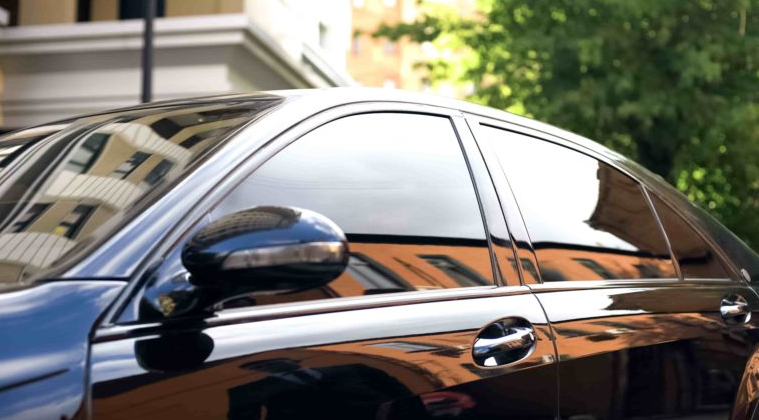As an expert on automobile window tinting, let’s journey together into the fascinating world of tinting laws in the sunny state of Texas. This comprehensive guide provides authoritative information on what is the darkest legal tint in Texas?
Whether you’re a long-time Texan, new to the state, or simply traveling through, we’ve got you covered. You’re about to learn exactly how dark you can go with your car window tint in Texas and remain on the right side of the law.
Understanding What is the Darkest Legal Tint in Texas?
Window tint laws in Texas are governed by the Texas Department of Public Safety, which specifies the Visible Light Transmission (VLT) percentage allowed for various windows in a vehicle.
The VLT percentage is a critical measure for window tinting. In layman’s terms, it’s the amount of visible light that can pass through your window tint film. For example, a 35% VLT means 35% of the sunlight can pass through the tint film. The lower the VLT percentage, the darker the tint.
Legal Car Window Tint Percentage in Texas

To get the facts straight, let’s delve into the specifics of the tint darkness regulations in Texas. For sedans, SUVs, and vans:
- Windshield: The tint must allow more than 25% light inside. Moreover, the tint cannot extend lower than the AS1 line marked by the manufacturer or 5 inches down from the top of the windshield.
- Front Side Windows: The tint must allow more than 25% light inside.
- Back Side Windows and Rear Window: Any tint darkness can be used.
So, while your windshield and front side windows need to have a VLT of 25% or higher, you have more freedom with your back side windows and rear window.
Understanding the Tint Ticket Cost in Texas

So, what happens if your window tint is darker than allowed by Texas tint darkness regulations? You’ll likely get a tint ticket, which is a citation for violating window tint laws. The cost can range from $20 to $500, depending on the degree of violation and your history of previous offenses.
Texas Tint Inspection Requirements
Texas state law requires that vehicles pass an annual inspection, which includes a check on window tinting. Vehicles with illegal tint can fail the inspection, and owners may need to remove or replace the tint to pass.
The Benefits of Legal Window Tint in Texas
Legal window tinting provides a host of benefits. It can help reduce heat and glare, block harmful UV rays, increase privacy, and enhance the aesthetic appeal of your vehicle. Plus, legal window tint ensures that you can enjoy these benefits without the risk of getting a tint ticket.
How Dark Can You Tint Your Car Windows in Texas?
After learning about the Texas tint laws, you may still wonder, “how dark can I tint my car windows in Texas?”
Remember that for sedans, SUVs, and vans, the tint on the windshield and front side windows must allow more than 25% light inside. This means that the darkest legal tint you can have on these windows is a tint with a VLT of 25%. On the other hand, you can use any darkness for your back side windows and the rear window.
Window Tint Exemptions in Texas
There are certain window tint exemptions in Texas for individuals with specific medical conditions that require higher levels of sun protection. If you believe you may qualify for a medical exemption, contact the Texas Department of Public Safety for more information.
Reflective and Colored Tints in Texas: What You Should Know
Venturing further into Texas window tint laws, it’s crucial to understand the regulations around reflective and colored tints.
Reflective tints are those that contain metallic elements, making the windows appear mirrored from the outside. Texas law allows these tints; however, they cannot be more than 25% reflective. Exceeding this limit can lead to the same consequences as having a tint that’s too dark.
As for colored tints, Texas is pretty lenient. You are allowed to use colors for your window tints. However, red, amber, and blue tints are not allowed on any window.
Texas Tint Laws for Commercial Vehicles
Commercial vehicles aren’t exempt from tint laws in Texas. The tint laws for these vehicles are the same as for sedans, SUVs, and vans. Specifically, the tint on windshields and front side windows must allow more than 25% of light inside. However, the tint on back side windows and rear windows can be as dark as the owner prefers.
Tinted License Plate Cover Laws in Texas
Diving into another area of Texas tint regulations, you might be curious about tinted license plate cover laws.
In Texas, it is illegal to use any material or covering that makes a license plate less readable or distinguishable. Therefore, while tinted license plates might add a cool factor to your vehicle, they are not legal in Texas.
Comparing Texas Tint Laws with Neighboring States
Tint laws vary across states, and comparing Texas to its neighboring states reveals these differences.
For example, Louisiana and Oklahoma also mandate a minimum VLT of 25% for the windshield and front side windows, similar to Texas. However, New Mexico allows a slightly darker tint, with a minimum VLT of 20% for the same windows.
Finding Certified Window Tint Installers in Texas
For high-quality and legal window tint installation, it’s advisable to seek the services of certified installers. These professionals understand the state’s tint laws and can advise you on the best tint to meet your needs while staying legal.
Cost of Removing Illegal Window Tint in Texas
If you’ve installed an illegal tint and need to remove it, be prepared for additional costs. The process can cost anywhere from $100 to $400, depending on the size and type of vehicle. Therefore, it’s crucial to get the tint right the first time.
Factory-Tinted Windows: Are They Legal in Texas?
Factory-tinted windows are generally made to comply with federal regulations, which mandate a minimum VLT of 70% for the windshield and front side windows.
Since Texas laws allow a darker tint (25% VLT) than federal regulations, factory-tinted windows are typically legal in Texas. However, it’s always wise to double-check with a local professional to ensure compliance.
UV Protection Window Tint: A Wise Choice for Texas
Given Texas’s sunny climate, UV protection window tint is a popular choice among vehicle owners. These tints block up to 99% of harmful UV rays, providing increased protection for you and your vehicle’s interior. Importantly, these tints can still comply with Texas tint laws, as long as they meet the VLT requirements.
A Look at Sun Control Window Film Regulations in Texas
Sun control window films are another excellent option for Texans. These films help reduce glare and heat, making your ride more comfortable. Like other types of tints, they must adhere to the state’s VLT requirements.
Also Read: Why is the Crime Rate So High in Laurel Mississippi?
The Verdict: Making the Most of Legal Tint in Texas
Understanding “What is the Darkest Legal Tint in Texas?” helps you make the most of your vehicle while ensuring you’re driving safely and legally. Remember that while Texas allows a good deal of flexibility in back side windows and rear window tinting, front side windows and windshields must allow more than 25% of light inside.
Enjoy the combined benefits of privacy, UV protection, glare reduction, and enhanced aesthetics that window tinting offers while keeping Texas law in mind. Drive safe, and remember: when it comes to window tint in Texas, knowing the law keeps you cool in more ways than one!

A captivating wordsmith and dynamic blogger. With her pen as her wand, she weaves enchanting tales and thought-provoking insights that leave readers spellbound. Embrace the magic of her storytelling prowess and embark on an unforgettable literary journey with this talented writer.





